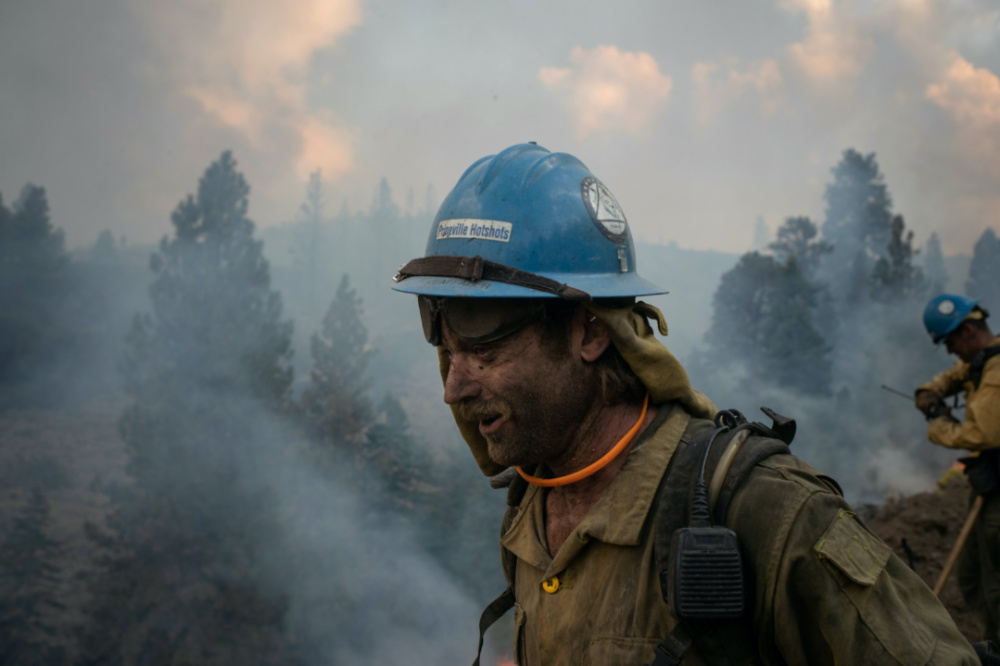New York City, US
Thomson Reuters Foundation
The yearly land area burned by severe wildfires in the western United States has grown eight times larger in less than four decades, researchers said on Monday, warning that higher temperatures and drier conditions are threatening irreparable forest loss.
Some 210,000 acres burned in 2017, up from 26,000 acres in 1985, in high severity fires that kill more than 95 per cent of trees in their path, according to a study by the US Forest Service Rocky Mountain Research Station, a government organisation.

Kirk McDusky, a member of the Prineville Hotshot Crew, walks past smoke rising from the Brattain Fire in the Fremont National Forest in Paisley, Oregon, US, on 18th September. PICTURE: Reuters/Adrees Latif
As the intensity of fires and temperatures rise due to global warming, the western forests lost in severe blazes may be unable to grow back to what they once were, the research said.
“As more area burns at high severity, the likelihood of conversion to different forest types or even to non-forest increases,” said Sean Parks, a research ecologist at the Forest Service organisation and lead author of the study.
“At the same time, the post-fire climate is making it increasingly difficult for seedlings to establish and survive, further reducing the potential for forests to return to their pre-fire condition,” he said in a statement.
Overall, wildfires have scorched millions of acres in California and the Pacific Northwest this year, the worst fire season in regional history, and they have killed several dozen people.
The 2020 months of August, September and October ranked as California’s hottest since records began in 1895, according to the US National Weather Service.
Fires are often a natural component of an ecosystem, but while areas have evolved to handle low-intensity blazes, few can recover from the destruction of severe fires, experts say.
If too many trees die, not enough viable seeds and animals may remain for forest regrowth, said Erica Fleishman, director of the Oregon Climate Change Research Institute at Oregon State University.
“Think of it like a marshmallow. If you lightly toast your marshmallow, you have the sort of tan areas and the white areas, and your marshmallows still has some integrity as a marshmallow,” Fleishman told the Thomson Reuters Foundation.
“If you charbroil your marshmallow, the integrity of your marshmallow changes.”
The study’s authors suggested that land managers promote the use of controlled burns, fires set intentionally to decrease the chances of more destructive fires and to stimulate regrowth, in western US forests.





